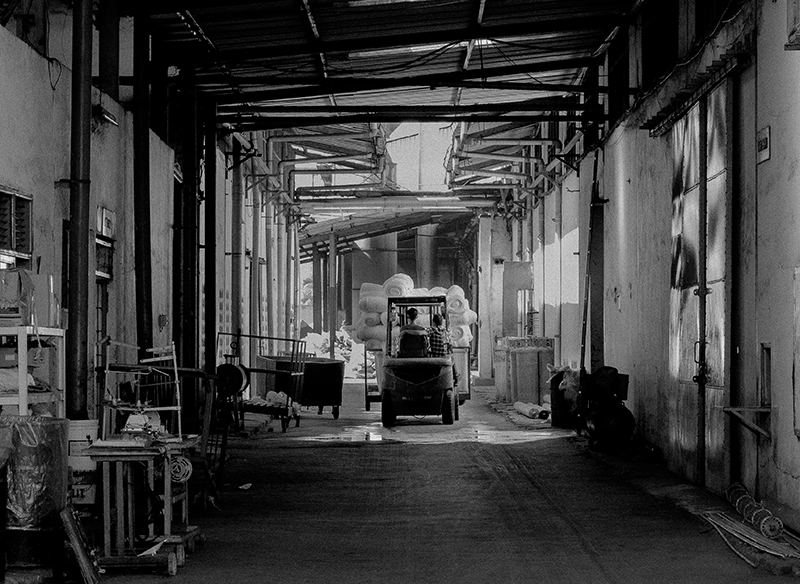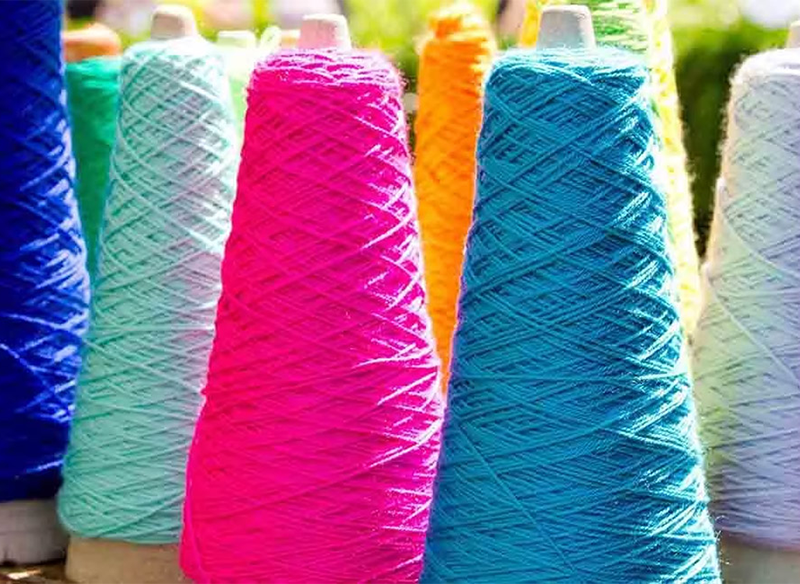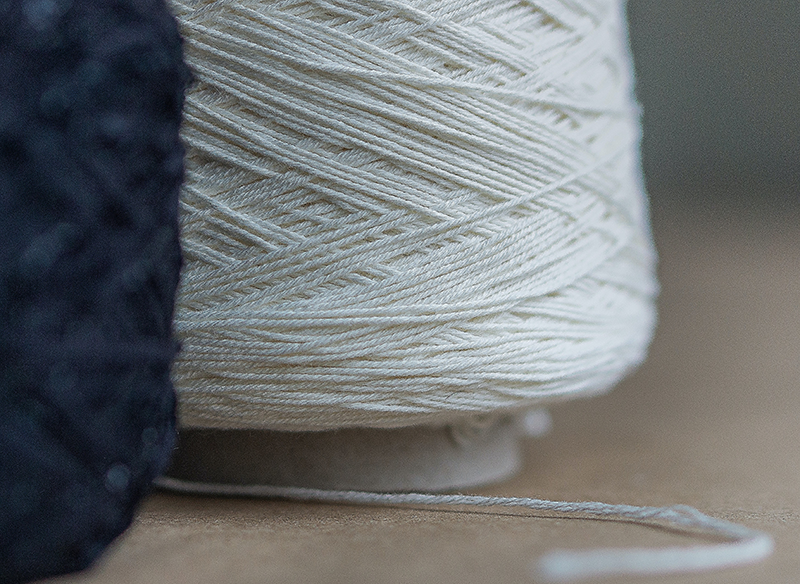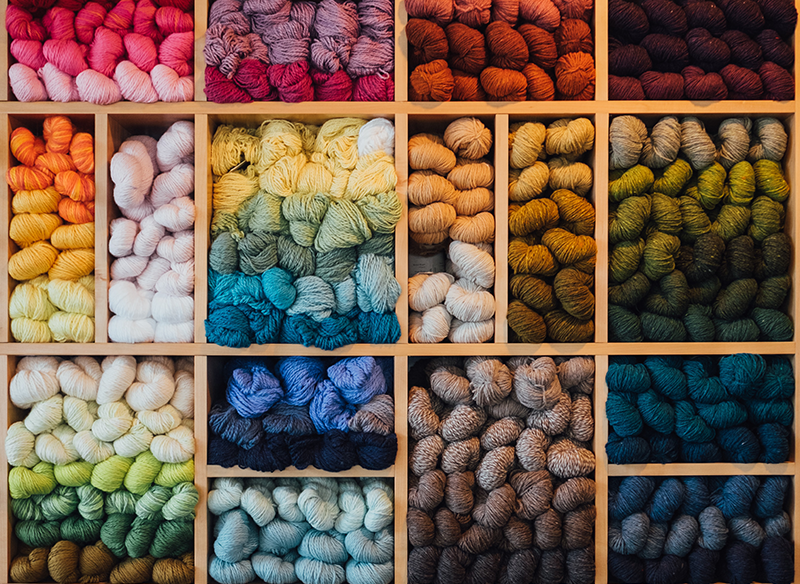29 Apr, 2024

Process of manufacturing of the Cotton Yarns
A continuous and homogeneous mass of fibers knotted together to form a yarn. Here in this article know more about the Process of manufacturing of the Cotton Yarns in detail. Yarns are created by inserting a twist into the mass of fibers. The basic material that goes into making the cloth is known as yarn. There is a significant amount of variation to be found in the thickness of the yarn. The number of strands per inch is the standard method for describing the thickness of the yarn. A count is a number that reflects the fineness or coarseness of the yarn. It may also be described as the number. Yarns can either be spun from staple fiber or continuous filaments, depending on the desired result. In most cases, staple fiber is used in the manufacturing of the majority of yarns. A wide variety of machines, which are together referred to as spinning machines, are required for the production of yarns from staple fibers.
The following is an explanation of a method that uses spinning machines and a step-by-step sequence for the production of cotton staple yarn. Let’s check it out.
Cotton in bales form
Raw cotton is packaged in bales, and each bale will always have some quantity of trash or impurities in it. Trash is another name for these contaminants. The components that make up garbage include shattered seeds, husks, shattered leaves, dirt, and short fibers, amongst other things. The quality of the fibers determines the percentage of waste, which can range anywhere from 1% to 15% of the total. In most cases, cotton fibers are brought into the country in the form of bales, which is a highly compact format.
Blow room
In a cotton yarn spinning factory, the first portion that is completed is called the blow room. In this section, the procedure calls for the employment of a succession of various kinds of opening, cleansing, and mixing equipment in the specified order.
Carding
Carding may be described as the process of reducing an entangled or matted mass of fibers to a filmy web by working them between two closely spaced, relatively moving surfaces covered with sharp points. This is accomplished by moving the fibers between the carding surfaces. Carding motion is produced when the teeth on both sides are made to function in conjunction with one another from point to point. The process is known as stripping action and occurs when the gears are turned such that the point of rotation is at the back of the machine.
Drawing Frame
The motion of the rollers is responsible for almost all of the draught that is produced during drawing. In the creel of the drawing, frames are affixed to several containers containing the sliver that was produced by the carding procedure. When a sliver is fed into a system consisting of paired rollers running at different speeds, the process known as “drafting” takes place. By drafting the fibers in the sliver to make more of them parallel to the axis of the sliver, drawing is able to straighten the fibers in the sliver. When the fibers are later twisted into yarn, parallelization is required in order to acquire the qualities that are needed.
Drawing results in a sliver that is more consistent in weight per unit of length, which contributes to higher blending possibilities, and the process also generates a sliver. The finisher drawing technique results in virtually straight fibers that are parallel to the axis of the sliver. This is because the finisher drawing procedure is the last drawing step. It is not possible to draught a finisher-drawing sliver into yarn using typical ring-spinning devices because the weight per unit length of the sliver is excessive.
Speed/Roving Frame
The sliver delivered from the drawing frame and placed in the sliver container is fed into the speed frame. Another name for the speed frame is the roving frame.
Roving is the name given to the product that is distributed by roving machines. Roving is a kind of fiber strand that has a count that is lower than that of a sliver. In addition to that, it has a slight twist in order to maintain the integrity of the Fibers. It is coiled onto a package that is appropriate for feeding spinning machines.
During the roving process, the weight of the sliver is reduced to a size that is more appropriate for spinning into yarn and included twist, both of which help to preserve the integrity of the draught strands. Cans of slivers left over from finisher drawing or combing are placed in the creel, and individual slivers are then fed through two sets of rollers, one of which rotates at a slower speed than the other. This causes the diameter of the sliver to decrease from approximately 2.5 centimeters to that of a standard pencil. The process of passing a bundle of fibers through a device called a “flyer” for roving results in the fibers acquiring a twist. The product is now known as “roving,” and it is packed on a bobbin that is approximately 37.5 centimeters long and approximately 14 centimeters in diameter.
Ring Spinning
Ring spinning is a global spinning system. Creeling, twisting, drafting, winding, building up, and doffing are the stages that are involved in the process of ring spinning. The standard number of spindles found in ring frames is between 400 and 500, although a delivery option of 1000 spindles, or spindles per ring frame, is also available. The rovings, which are supplied to the ring frame in the shape of bobbins, are then fed into the creels of the machine. A pulling motion unwinds the rovings, and then they are moved through the drafting zone. The drafted fibers undergo twisting and formation of yarn at the front side of the drafting rollers that are front rollers.
Yarn
The delivery cargo, which is a yarn bobbin, is located on the spindle in this picture. The yarn that has been provided is wound onto the yarn bobbin.
Recent Posts
3 Oct, 2022
What are Cotton Yarns?
2 Oct, 2022
Uses of Cotton Yarn
1 Oct, 2022



